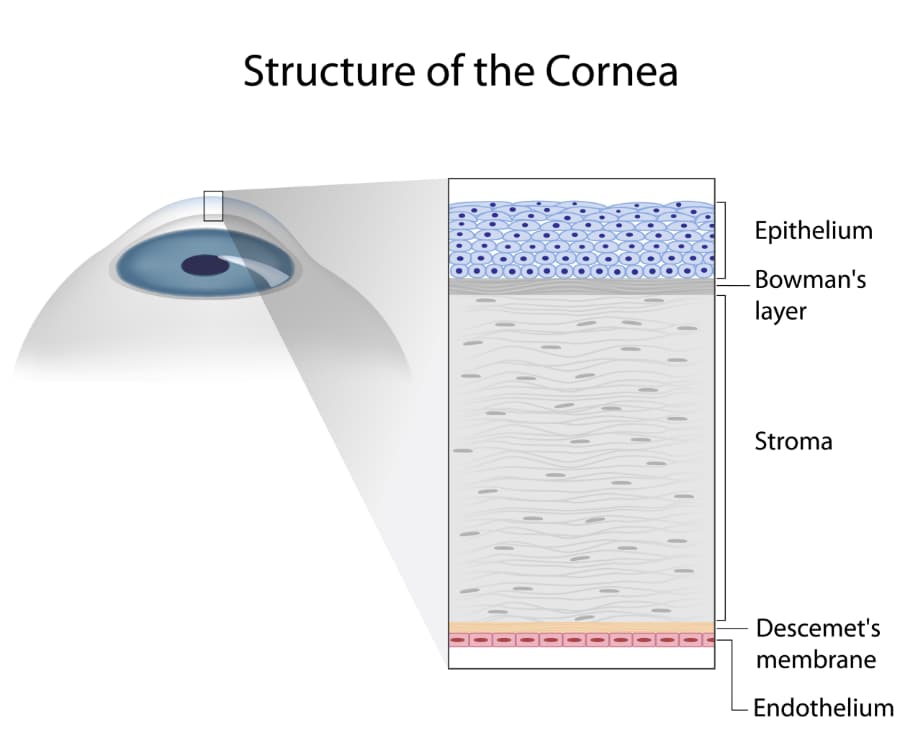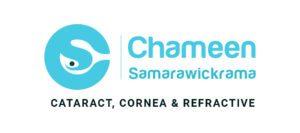
Keratoconus is a corneal disorder characterized by progressive thinning and bulging of the cornea, the transparent front part of the eye. This structural change leads to a conical shape, distorting vision and causing irregular astigmatism.
Individuals with keratoconus often experience blurred or distorted vision, increased sensitivity to light and frequent changes in their glasses or contact lens prescription. If left untreated, it can lead to corneal scarring and permanent vision loss. Fortunately, advances in ophthalmology have introduced a technique known as Corneal Cross-Linking (CXL), that has changed the way we are able to successfully treat progressive keratoconus.
What is Corneal Cross-Linking (CXL)?
CXL is a minimally invasive procedure designed to strengthen the cornea and halt the progression of keratoconus. It involves the application of Riboflavin (vitamin B2) eye drops onto the cornea, followed by exposure to ultraviolet (UV) light. Together with Oxygen, this combination induces a chemical reaction that creates cross-links between collagen fibers in the cornea, enhancing its rigidity and stability. Through reinforcement of the corneal structure CXL addresses the root cause of keratoconus, preventing further deformation and deterioration.
How is Corneal Cross-linking performed?

The cornea is comprised of multiple layers. CXL targets and strengthens the collagen fibers in the stromal layer. The procedure involves the gentle removal of the thin outermost epithelial layer of the cornea, to expose the stromal layer. Then Riboflavin eye drops are instilled every 90 seconds for 30 minutes. This is followed by a period of 10-30 minutes of targeted UV exposure with continued Riboflavin drops. There may be some discomfort for the first few days until the epithelial cells start to regenerate and grow back over the treated area. The effectiveness of treatment typically becomes apparent over several months to a year after the procedure.
Benefits of Corneal Cross-Linking
One of the primary benefits of Cross-Linking is its ability to halt or significantly slow down the progression of Keratoconus. This may potentially avoid more invasive treatment such as corneal transplantation as disease progresses.
The procedure is minimally invasive and performed as an outpatient in the ophthalmology clinic, which means you do not need to go into a hospital.It is important to note that CXL is a preventative treatment that will not improve vision that has already been lost – but aims to protect current vision levels and prevent further loss.
Original Source https://nexuseyecare.com.au/eyes/keratoconus-and-corneal-cross-linking/
